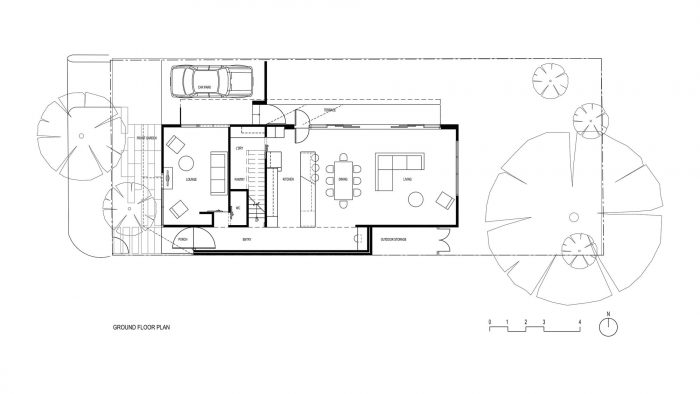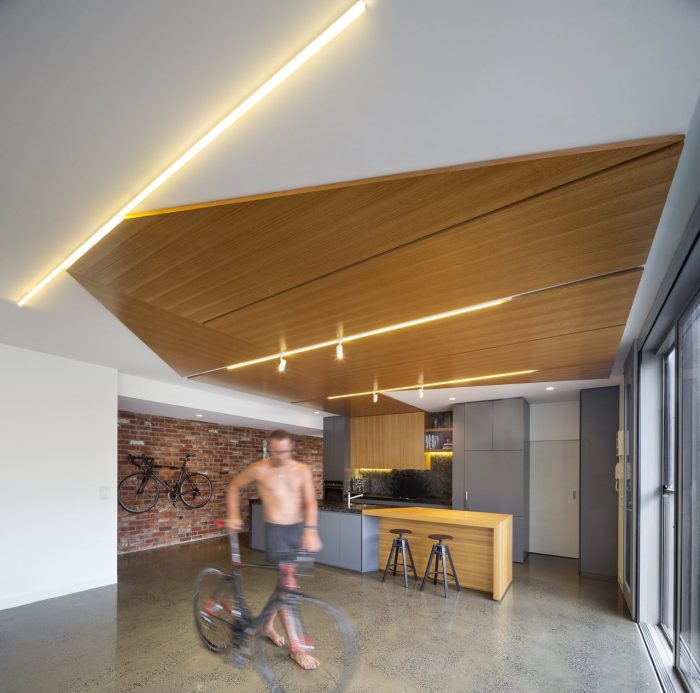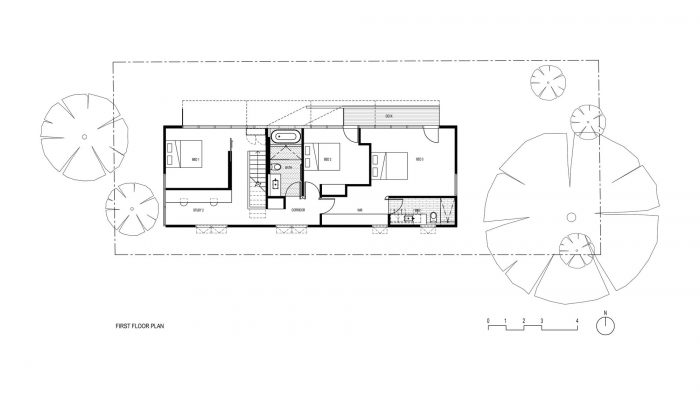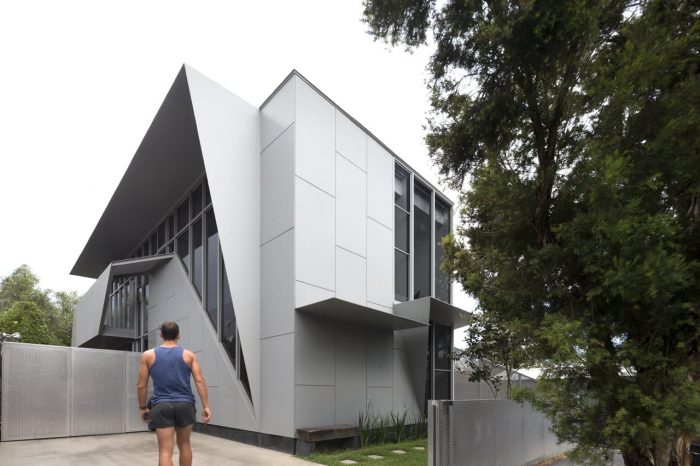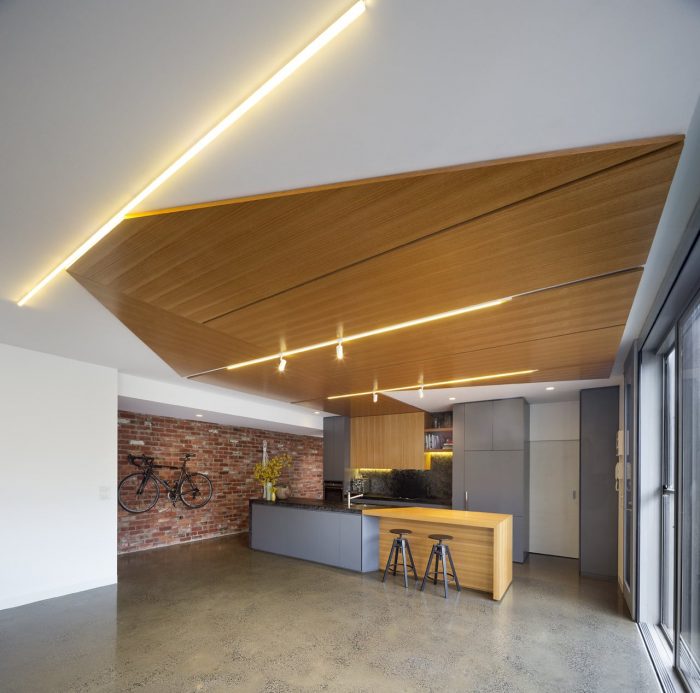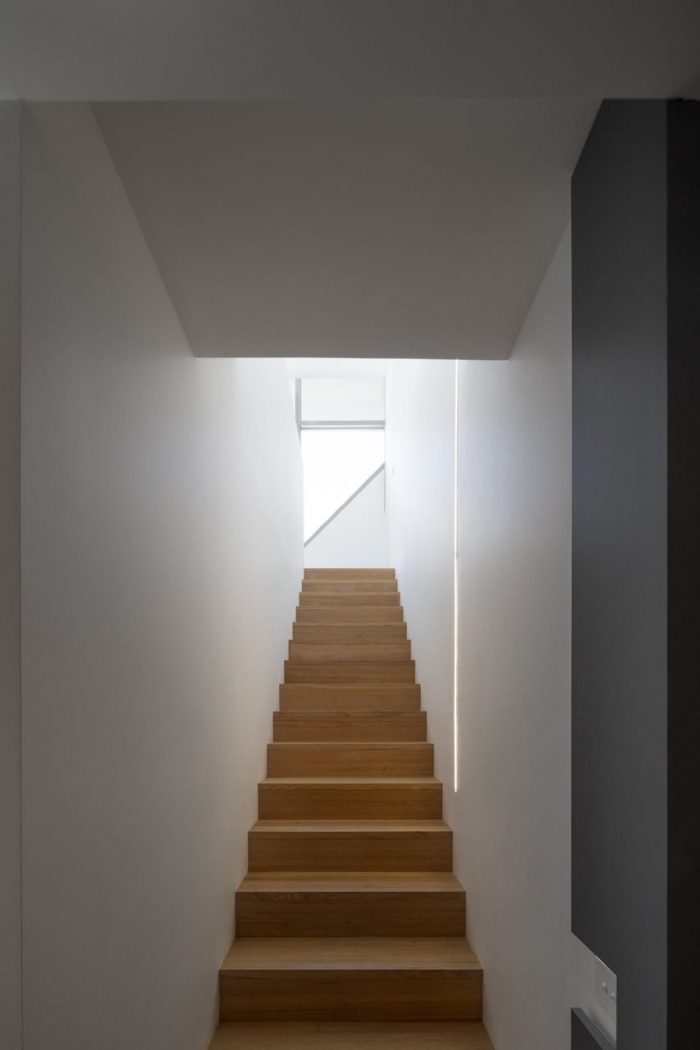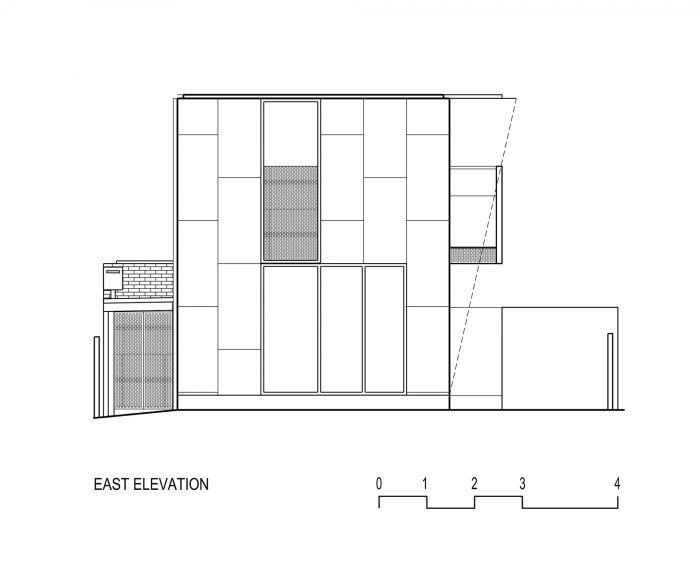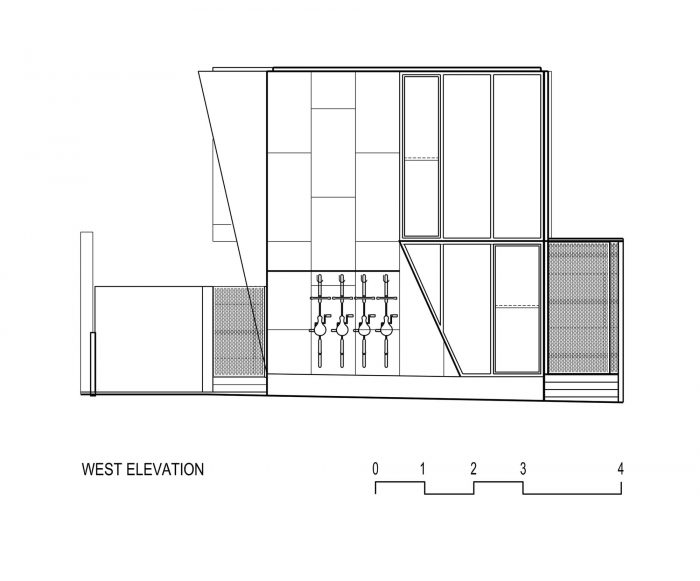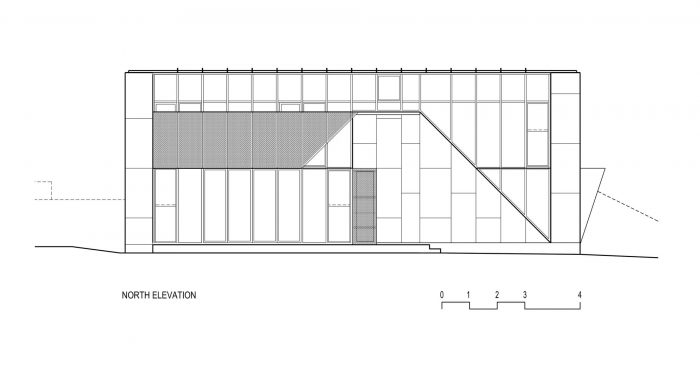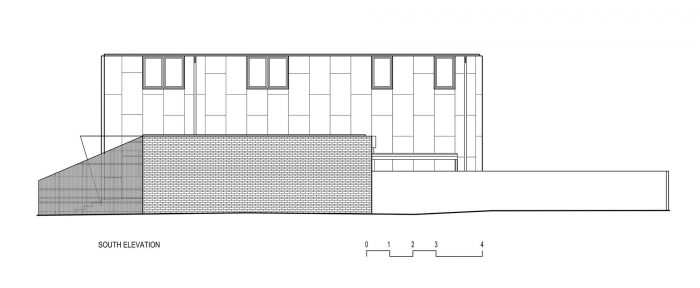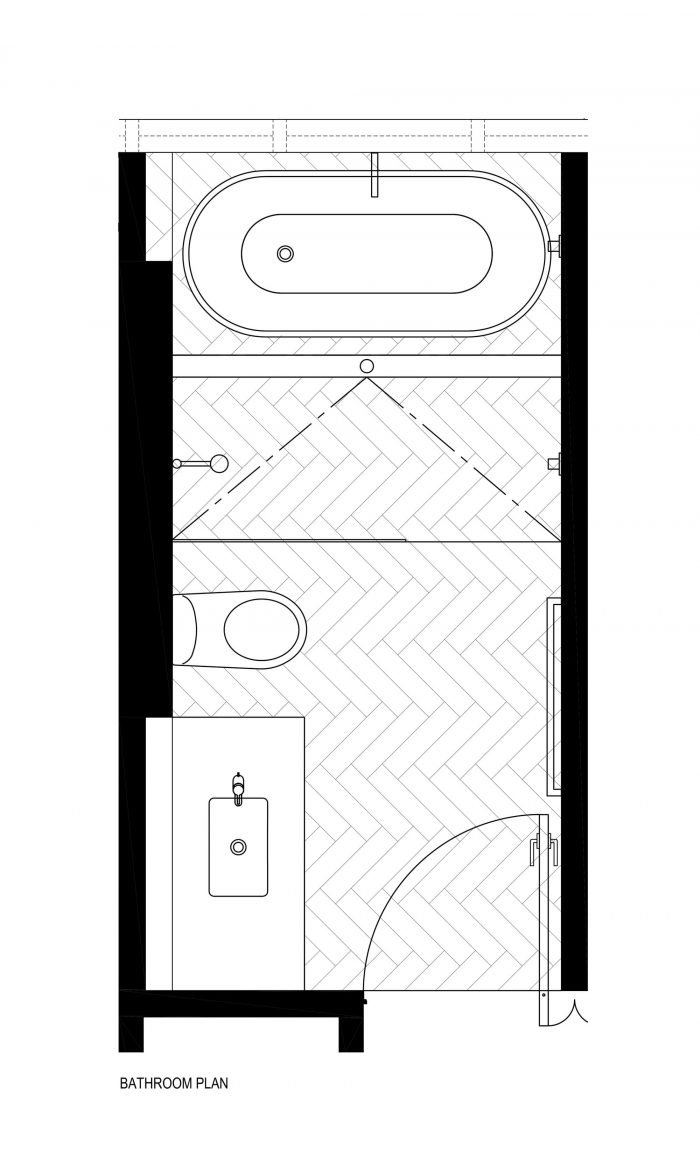该场地是墨尔本东南部的一个300平方米的小型郊区街区。设计任务是设计一个新的住宅,以容纳一个四口之家,同时还包括灵活的空间,可以随着孩子的成长和需求的变化而改变。由于自行车是这个家庭的主要交通工具,因此还需要在内部和外部容纳一批自行车。
The site is a small 300m2 suburban block in south east Melbourne. The brief was to design a new dwelling to accommodate a family of 4 while also including flexible spaces which can change as the children grow and the needs change. A collection of bikes also needed to be accommodated internally and externally as these are a major form of transport for the family.
预算非常紧张,所以建筑区域尽可能保持紧凑,并在整个过程中使用简单的具有成本效益的材料。设计了一个2层的结构,以最大限度地减少建筑物的占地面积,最大限度地增加花园空间。
The budget was very tight so the building areas were kept as compact as possible, and simple cost effective materials used throughout. A 2 storey structure was designed to minimise the building footprint and maximise the amount of garden space.
我们的策略是设计一个简单的水泥板箱,其中的元素可以折叠出来,在需要的地方创造遮阳装置和隐私屏幕。栅栏从建筑中展开,从入口处的顶棚折叠到街道上,然后蜿蜒环绕,掩盖了垃圾箱的外壳。栅栏上的三角形穿孔旨在阻止当地的涂鸦艺术家,并允许光线穿透。这种材料也被用作一楼的隐私屏幕,以防止俯视邻居的财产。
The strategy was to design a simple cement sheet box with elements which folded out of it to create shading devices and privacy screens where required. The fence unravels itself from the building, folding down from the entry canopy onto the street then winding around to conceal the bin enclosure. Triangular perforations in the fence aim to deter the local graffiti artists as well as allowing light to penetrate. This material is also used as a privacy screen on the 1st floor to prevent overlooking into neighbours’ properties.
相比之下,南部的再生砖墙为居住在该地区的当地涂鸦艺术家提供了一个画布。在内部,它被暴露在外面,用来存放一系列的自行车。
In contrast the southern recycled brick wall offers itself as a canvas for the local graffiti artists which reside in the area. Internally it is left exposed internally and is used to store a series of racing bikes.
虽然从街上看是一个原始的灰色雕塑盒子,但相比之下,内部有丰富的纹理和颜色,反映了其用户的活跃生活。内部使用了简单的调色板,包括裸露的砖、混凝土板、当地木材、层压板和复合板。在室内继续展开,厨房的天花板向下延伸,成为橱柜。石头和木材被拼接在一起,模仿外部雨棚投下的阴影。在细木工和瓷砖中,空间折叠和扭曲,响应了外墙的拉伸和折叠。
While the appearance from the street is a pristine grey sculpted box, in contrast, the interior is rich with texture and colour, reflecting the active life of its users. A simple palette of exposed brick, concrete slab, local timber, ply and laminate are used internally. The unfolding continues in the interior with the Kitchen ceiling wrapping down to become the cabinetry. Stone and timber are spliced together, imitating shadows cast by the canopies externally. Spaces fold and twist over themselves, in both the joinery and tiling, responding to the stretching and folding occurring on the façade.
除了卧室和生活区,还有3个额外的空间被纳入灵活的区域。楼下的一个空间可以作为独立的休息室或卧室,而一楼的空间也可以作为游戏空间或书房,这取决于家庭在不同时期的需求。在砖砌走廊空间的尽头,还纳入了一个家庭办公室,可供在家工作的父母使用,或作为孩子的电脑区。在建筑的南面精心隐藏了一个棚子,可以容纳更多的自行车和自行车制造的工具。
Along with the bedrooms and living areas, 3 additional spaces were incorporated as flexible zones. Downstairs, one can be used as a separate lounge or bedroom, while the 1st floor space can also be used as a play space or study, depending on the needs of the family at different times. A home office is also incorporated at the end of the brick corridor space, which can be used by either the parent working from home or as the childrens computer area. A shed is carefully concealed on the south of the building, accommodating more bikes and tools for bike builds.
每一毫米的空间都有一个用途,尽管这些空间足够灵活,可以随着家庭动态的变化而改变。
Every millimetre of space has a purpose, although the spaces are flexible enough to change as the family dynamics change over time.
Architects: FMD Architects
Area : 202 m²
Year : 2014
Photographs :John Gollings
Builder : Construction 32
Structural Engineer : OPS Engineers
Design Team : Fiona Dunin, Katherine Peasley, Robert Kolak, Caroline Tan, Alex Peck, Ryan Fothergill
Building Surveyor : Wilsmore Nelson Group
Site Area : 298 m2
City : Melbourne
Country : Australia




